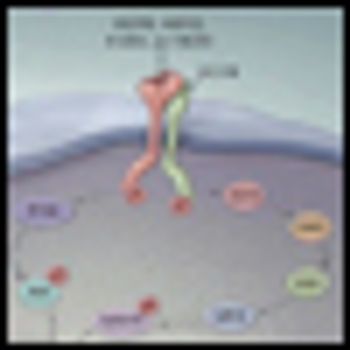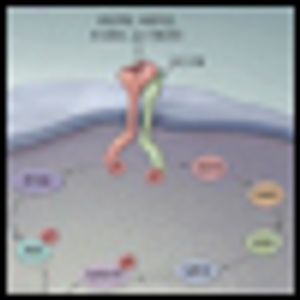Articles by Franco M. Muggia, MD

The regimen consisting of carboplatin and paclitaxel represents the backbone of ovarian cancer treatment. Here, we reflect on our experience administering the carboplatin/paclitaxel regimen to scores of ovarian cancer patients over the past decade and a half.

While a prominent role for HE4 in these areas remains to be determined, this thorough review of HE4 demonstrates that the biomarker is complementary to, and occasionally more useful than, the widely used CA 125 in the management of gynecologic malignancies.

This second article in our two-part series on targeted therapies in solid tumors covers the emergence of targeted therapies for the treatment of two common malignancies: lung cancer and breast cancer.

We describe areas where major inroads were initially achieved by targeting angiogenesis and by unraveling pathways in the heterogeneous tumors of mesenchymal origin-spurred by the identification of c-Kit–activating mutations in GIST and the regressions that ensued when tumors harboring these mutations were exposed to the tyrosine kinase inhibitor imatinib (Gleevec).

Epithelial ovarian cancer (EOC) spreads prominently within the peritoneal cavity. In fact, we now know that high-grade serous cancers are often of tubal origin, and their presentation as tubo-ovarian masses renders it likely that intraperitoneal spread occurs as an early event in their clinical evolution.

The Michener/Belinson articledeals not so much with what isnew in the treatment of ovariancancer, but with the changing managementparadigm. The authorscorrectly point out that one cannotexpect to offer curative options inovarian cancer patients who recur.Consequently, in planning therapy,the focus should be on the ability toprovide a lifelong strategy to controlthe disease through maintenance therapy.After first-line chemotherapy,complete responders have reasonablylong remissions in the absence of anyintervening therapies, but this is notlikely to be the case with recurrentdisease. In fact, Markman et al[1] havestressed that remissions followingtreatment for recurrence are neverlonger than the preceding ones.

The majority of patients with ovarian cancer, especially those whopresent with stages IIIC and IV, will relapse soon after completion ofplatinum-based induction treatment. It is imperative to find ways to improveand/or enhance the efficacy of induction and to prolong the durationof the first remission. The epidermal growth factor receptor (EGFR)family has been exploited, and currently, three agents that directly targetthis group of receptors are in use in the treatment of colorectal,non–small-cell lung and breast cancers. EGFR and HER2/neu areoverexpressed in a significant percentage of epithelial ovarian cancers.Thus, it would be reasonable to explore directly targeted therapyin ovarian cancer. Numerous investigational trials involving a varietyof EGFR inhibitors in ovarian cancer are ongoing. Our institution hasan active phase II clinical study that seeks to define the role of erlotinib(Tarceva) in potentiating first-line chemotherapy, and to determinewhether the drug offers a significant contribution as maintenancetherapy. It is hoped that data from these and other studies will helpinvestigators to understand more clearly the biology of ovarian cancerand to delineate the role of EGFR inhibitors in the management ofovarian cancer.

Estramustine is nornitrogen mustard linked to estradiol. It binds to tubulin and to microtubule-associated proteins, depolymerizes cytoplasmic microtubules, and disrupts the nuclear matrix. It has limited clinical

Paclitaxel (Taxol) is a diterpene originally obtained from the bark of the Pacific Yew Tree, Taxus Brevifolia. Its mechanism of action is unique. it stabilizes microtubule polymerization, thus blocking cells in the G2/M phase of

Pegylated Liposomal Doxorubicin: Antitumor Activity in Epithelial Ovarian Cancer or Cancers of Peritoneal Origin
ByFranco M. Muggia, MD,Tamar Safra, MD,Susan Groshen, PhD,Susan Jeffers, RN,Lynda Roman, MD,Matthew Tan, MD,Laila Muderspach, MD,Alexander Burnett, MD,Silvia C. Formenti, MD,C. Paul Morrow, MD,Michael Amantea, PhD After pegylated liposomal doxorubicin (PEG-LD) (Doxil) was shown to be active in ovarian tumors, several trials were developed at the University of Southern California to determine its safety and efficacy in a variety of gynecologic and peritoneal malignancies. Completed phase I and phase II trials have found PEG-LD to be safe and effective in the treatment of platinum- and paclitaxel-refractory epithelial ovarian carcinoma. A new phase II trial is currently underway in similarly refractory patients with ovarian and other related cancers and various degrees of pretreatment. In addition, the efficacy of PEG-LD is being explored in combination with paclitaxel (Taxol), with cisplatin, and with hyperthermia. [ONCOLOGY 11(Suppl 11):38-44, 1997]

Dr. Schuchter's article explores the theoretical and practical aspects underlying the concept of cytoprotection, which has been recently introduced into the therapeutic armamentarium. Cytoprotection is contrasted with the related strategy of rescue, which has been widely applied since the cytokines granulocyte colony-stimulating factor (G-CSF, filgrastim [Neupogen]) and granulocyte-macrophage colony-stimulating factor (GM-CSF, sargramostim [Leukine, Prokine]) obtained FDA approval.




